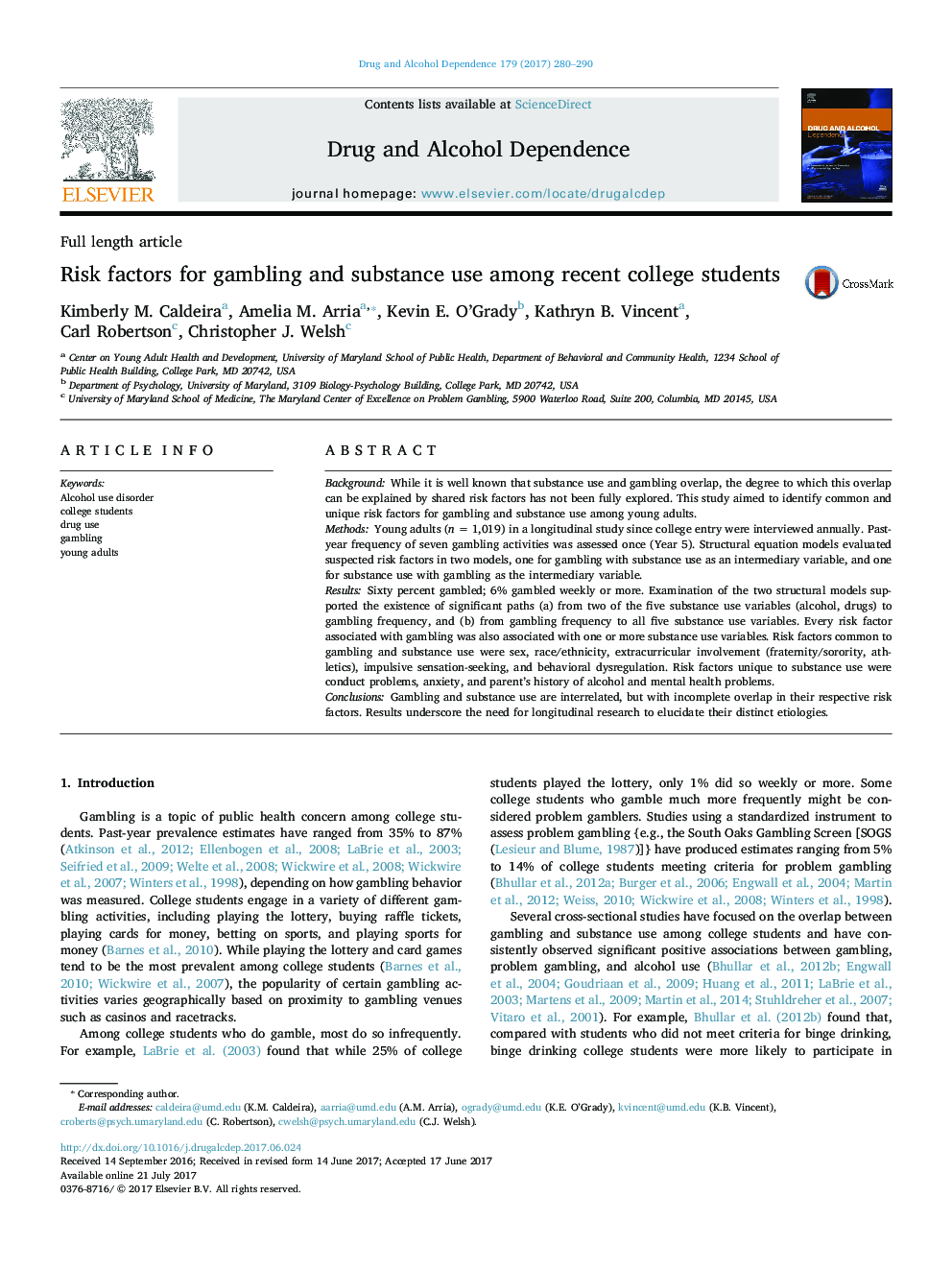| Article ID | Journal | Published Year | Pages | File Type |
|---|---|---|---|---|
| 5119956 | Drug and Alcohol Dependence | 2017 | 11 Pages |
â¢More than half of the sample (60%) gambled, with 6% gambling weekly or more.â¢Casino gambling was the most prevalent gambling activity.â¢Gambling is associated with more frequent substance use.â¢Gamblers were more likely to be male, athletes, and part of a Greek organization
BackgroundWhile it is well known that substance use and gambling overlap, the degree to which this overlap can be explained by shared risk factors has not been fully explored. This study aimed to identify common and unique risk factors for gambling and substance use among young adults.MethodsYoung adults (n = 1,019) in a longitudinal study since college entry were interviewed annually. Past-year frequency of seven gambling activities was assessed once (Year 5). Structural equation models evaluated suspected risk factors in two models, one for gambling with substance use as an intermediary variable, and one for substance use with gambling as the intermediary variable.ResultsSixty percent gambled; 6% gambled weekly or more. Examination of the two structural models supported the existence of significant paths (a) from two of the five substance use variables (alcohol, drugs) to gambling frequency, and (b) from gambling frequency to all five substance use variables. Every risk factor associated with gambling was also associated with one or more substance use variables. Risk factors common to gambling and substance use were sex, race/ethnicity, extracurricular involvement (fraternity/sorority, athletics), impulsive sensation-seeking, and behavioral dysregulation. Risk factors unique to substance use were conduct problems, anxiety, and parent's history of alcohol and mental health problems.ConclusionsGambling and substance use are interrelated, but with incomplete overlap in their respective risk factors. Results underscore the need for longitudinal research to elucidate their distinct etiologies.
